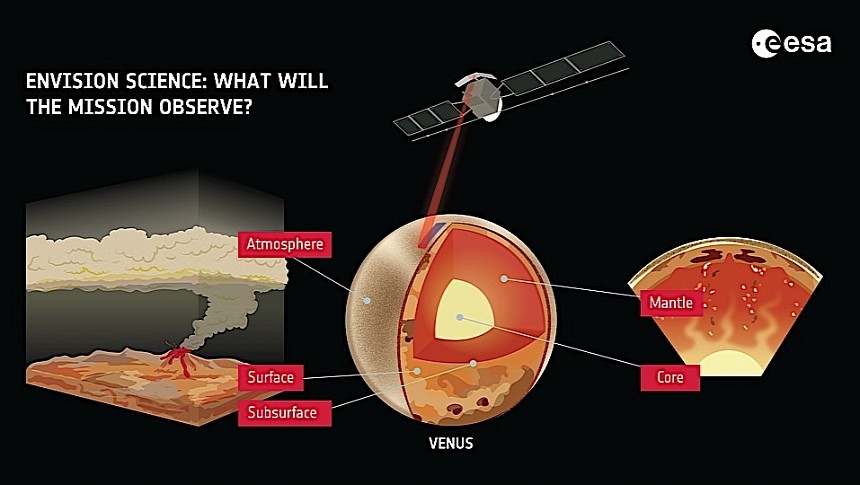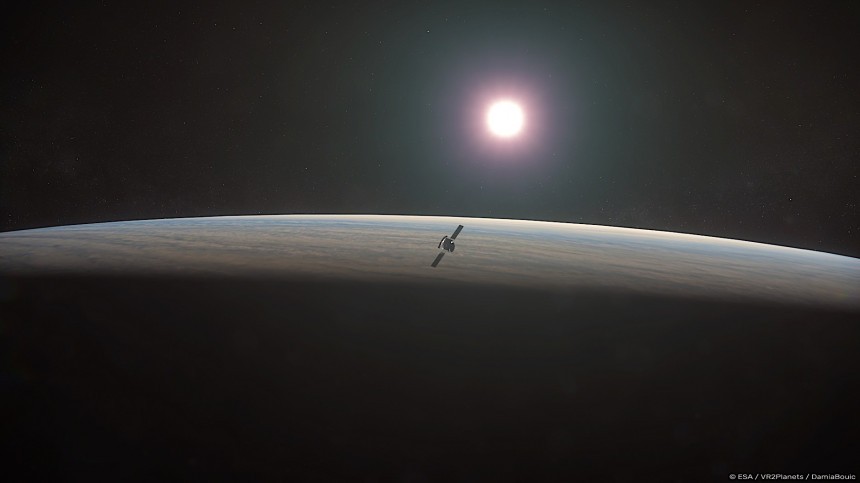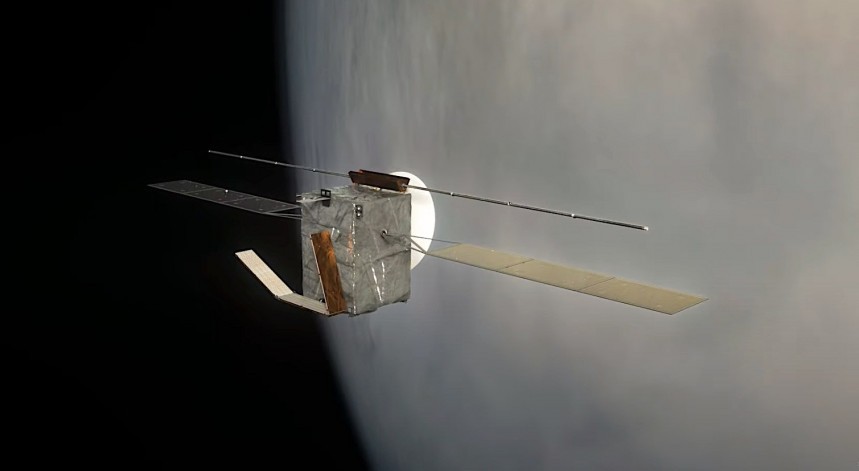The current mood of our astronomers, who not long ago ostracized Pluto, puts the number of planets in our solar system at eight. Four of them, the inner ones, are rocky, while the other half, residing on the outer reaches of our immediate neighborhood, are either gas or ice giants. And we know quite a lot about each of the eight, with the exception perhaps of one: Venus.
Venus is one of the four rocky (or terrestrial) planets, in the sense that it too has a solid surface you could step on. It's our immediate neighbor, the second planet of the Sun, and because it is roughly the same size as Earth, it (not Mars) is considered our home planet's true twin sister.
An evil twin, most likely, as Venus is almost always covered in clouds of sulphuric acid and other stuff that makes its atmosphere so thick you can barely notice the Sun. Then, the surface temperature is high enough to easily melt lead (464 degrees Celsius/867 degrees Fahrenheit), and the pressure is high enough to squash you instantly - 92 times higher than what one experiences on Earth.
The current state of affairs is not how Venus has always been. There are speculations that at one point, probably a billion years ago, a habitable ocean might have resided up there. But we don't really know, just like we really don't know much about the planet as a whole.
There have been missions to Venus, but their scope and scarceness leave more unknown mysteries about the place than known facts. Missions started in 1962 with NASA's Mariner 2, continued in the 1960s with the two Russian Venera spacecraft, and pretty much ended in the 1990s with the return of the American Magellan radar mapping ship.
The mysteries surrounding Venus are both of the usual and unusual nature. In the first category fall questions like how did it form, did it ever host life, did it have water and how much? The second focuses on the way the planet is now: the composition of its atmosphere, its core, mantle, and crust, and its weather.
It is this second category of questions a mission that was just approved by the European Space Agency (ESA) will try to answer. It's called EnVision, and it is scheduled to depart our planet in 2031 on board an Ariane 6 rocket.
The mission is Europe's second to Venus, after the Venus Express, which from 2005 to 2014 was tasked with studying the planet's atmosphere. This one, however, is meant to look at Venus as a system, stripping it bare from the inside out, from the core to the atmosphere.
To perform its allotted tasks, the EnVision spacecraft will be packed to the teeth with instruments, some of which will be supplied by NASA.
One of these instruments, a subsurface radar sounder, will look deeply beneath the surface, making the mission the first ever to do so. It is hoped the hardware will give us a better understanding of Venus' core, mantle, and crust structure and thickness.
Another radar called VenSAR (this is NASA's contribution) will be used to map the surface, and it will do so with a resolution down to ten meters (33 feet). This instrument will be deployed to determine the properties of the planetary surface, including its texture.
Three spectrometers will be on board to give us a better picture of the composition of the Venusian surface and atmosphere, while a radio instrument will be used to "study the planet's internal structure and properties of the atmosphere."
The people running this project are hopeful the tools deployed to study Venus, "arguably the least understood of the solar system's terrestrial planets," will give us a new perspective on the planet's history, geological activity, and climate.
We'll probably also get clues on how the planet formed and how it became so unfriendly to life as we know it. The work of volcanoes, plate tectonics and asteroids will also likely be revealed, both in the past and in the present.
By the end of the current year ESA is to announce the name of the company tasked with building the EnVision. Once it's ready and reaches Earth's sister planet, it will be accompanied by two other missions, this time cooked up by NASA: the Deep Atmosphere Venus Investigation of Noble gases, Chemistry, and Imaging (DAVINCI, set to reach Venus in 2031), and Venus Emissivity, Radio Science, InSAR, Topography, and Spectroscopy (VERITAS, set to leave early next decade).
The trio of missions will "provide the most comprehensive study of Venus ever," according to ESA, but that's solely to advance our knowledge of our neighbor, and possibly give us a better understanding of the general rules of planetary evolution.
Because of the incredibly adverse conditions on the planet, there are and probably will never be any missions designed around rovers and humans themselves.
An evil twin, most likely, as Venus is almost always covered in clouds of sulphuric acid and other stuff that makes its atmosphere so thick you can barely notice the Sun. Then, the surface temperature is high enough to easily melt lead (464 degrees Celsius/867 degrees Fahrenheit), and the pressure is high enough to squash you instantly - 92 times higher than what one experiences on Earth.
The current state of affairs is not how Venus has always been. There are speculations that at one point, probably a billion years ago, a habitable ocean might have resided up there. But we don't really know, just like we really don't know much about the planet as a whole.
There have been missions to Venus, but their scope and scarceness leave more unknown mysteries about the place than known facts. Missions started in 1962 with NASA's Mariner 2, continued in the 1960s with the two Russian Venera spacecraft, and pretty much ended in the 1990s with the return of the American Magellan radar mapping ship.
The mysteries surrounding Venus are both of the usual and unusual nature. In the first category fall questions like how did it form, did it ever host life, did it have water and how much? The second focuses on the way the planet is now: the composition of its atmosphere, its core, mantle, and crust, and its weather.
It is this second category of questions a mission that was just approved by the European Space Agency (ESA) will try to answer. It's called EnVision, and it is scheduled to depart our planet in 2031 on board an Ariane 6 rocket.
To perform its allotted tasks, the EnVision spacecraft will be packed to the teeth with instruments, some of which will be supplied by NASA.
One of these instruments, a subsurface radar sounder, will look deeply beneath the surface, making the mission the first ever to do so. It is hoped the hardware will give us a better understanding of Venus' core, mantle, and crust structure and thickness.
Another radar called VenSAR (this is NASA's contribution) will be used to map the surface, and it will do so with a resolution down to ten meters (33 feet). This instrument will be deployed to determine the properties of the planetary surface, including its texture.
Three spectrometers will be on board to give us a better picture of the composition of the Venusian surface and atmosphere, while a radio instrument will be used to "study the planet's internal structure and properties of the atmosphere."
The people running this project are hopeful the tools deployed to study Venus, "arguably the least understood of the solar system's terrestrial planets," will give us a new perspective on the planet's history, geological activity, and climate.
By the end of the current year ESA is to announce the name of the company tasked with building the EnVision. Once it's ready and reaches Earth's sister planet, it will be accompanied by two other missions, this time cooked up by NASA: the Deep Atmosphere Venus Investigation of Noble gases, Chemistry, and Imaging (DAVINCI, set to reach Venus in 2031), and Venus Emissivity, Radio Science, InSAR, Topography, and Spectroscopy (VERITAS, set to leave early next decade).
The trio of missions will "provide the most comprehensive study of Venus ever," according to ESA, but that's solely to advance our knowledge of our neighbor, and possibly give us a better understanding of the general rules of planetary evolution.
Because of the incredibly adverse conditions on the planet, there are and probably will never be any missions designed around rovers and humans themselves.









